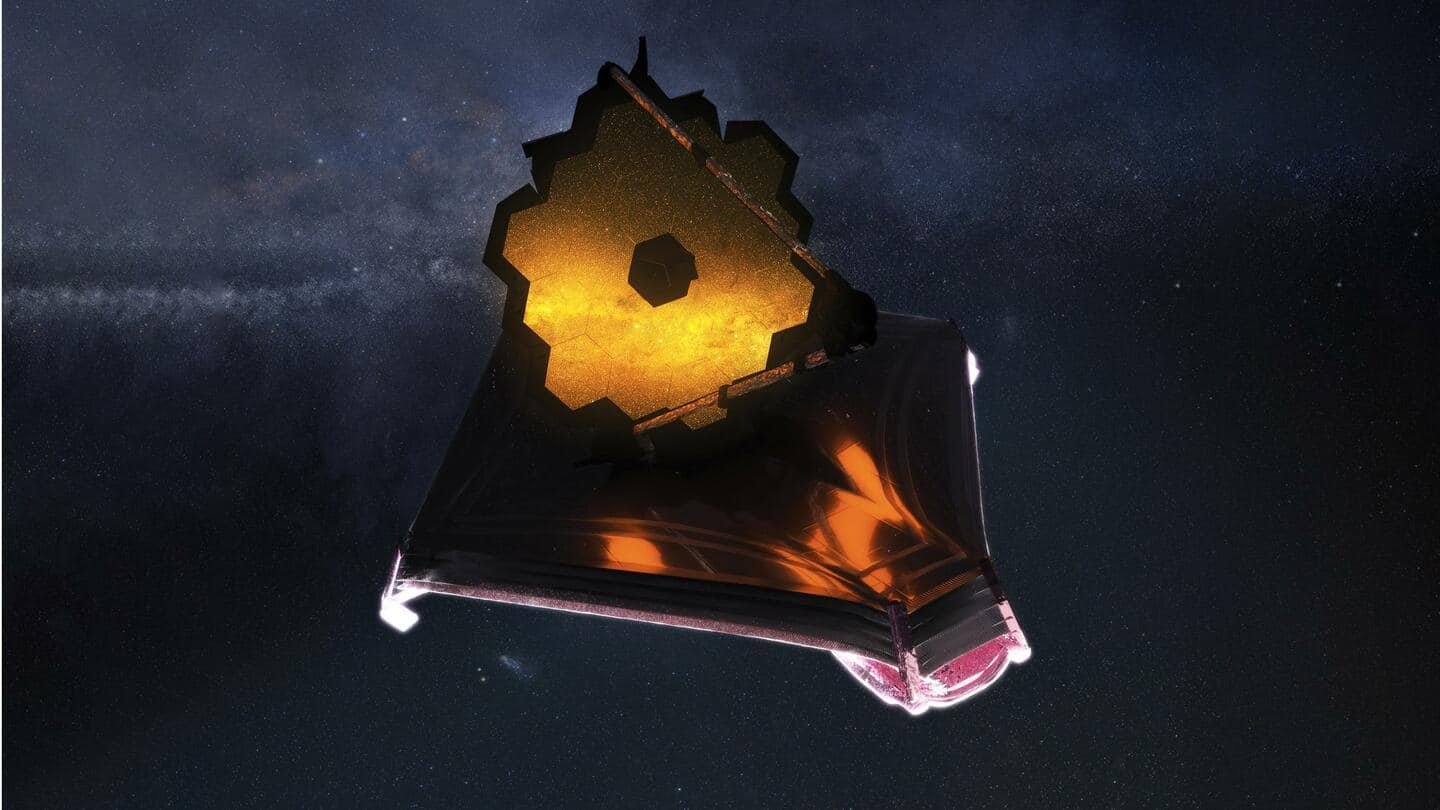
NASA's James Webb Space Telescope reveals the most distant galaxies
What's the story
Astronomers have identified two of the most distant galaxies ever known using the James Webb Space Telescope (JWST). The 'exceptionally bright galaxies' existed approximately 350 and 450 million years after the Big Bang, which took place 13.8 billion years ago. The current distances of the galaxies have been estimated based on their infrared colors. However, further spectroscopic studies are required to confirm these measurements.
Context
Why does this story matter?
JWST, the current largest and most powerful space telescope, was launched in December 2021. NASA's $10 billion telescope has completed five months of its mission. The latest discoveries reveal some of the most distant galaxies in our wide universe. Our knowledge about faraway galaxies has been significantly enhanced. Based on the latest findings, two research papers have been published in the Astrophysical Journal Letters.
Details
The distant galaxies were spotted in the GLASS-JWST images
The initial findings resulted from a broader research initiative of the Early Release Science (ERS) programs called Grism Lens-Amplified Survey from Space (GLASS). Upon scrutinizing the GLASS-JWST images, researchers spotted the two distant galaxies. The observations suggest that these galaxies formed and evolved much earlier in the history of our Universe than what astronomers have been able to study until now.
Twitter Post
Check out the images of the most distant galaxies
"This is a whole new chapter in astronomy."
— NASA Webb Telescope (@NASAWebb) November 17, 2022
Webb researchers found 2 early galaxies, one of which may contain the most distant starlight ever seen. These 2 unexpectedly bright galaxies could fundamentally alter what we know about the very first stars: https://t.co/1MrIy1TAkL pic.twitter.com/TI1ZpFWJPG
Details
The previous distant galaxy existed 400 million years ago
GN-z11, which existed 400 million years after the Big Bang was the most distant galaxy known to date. It was identified in 2016 by the Hubble Space Telescope and Keck Observatory. The latest discovery sets a new record. Now, GLASS-z12 is the most distant of the two recently discovered galaxies and is said to have existed 350 million years after the Big Bang.
Procedure
The higher the redshift, the more distant the galaxy
Scientists measure the distance of galaxies by using a measure known as the 'redshift.' Higher redshifts indicate that the galaxies lie further away. Of the two discovered galaxies, one has a redshift of 10.4 or 10.6, while the other has a redshift of 12.2 or 12.4. The latter breaks the existing record of the GN-z11 galaxy which has a redshift of 11.
Galaxies
The two galaxies are compact and disc-shaped objects
"Like many other distant galaxies spotted by JWST, the two contenders for the most-distant galaxy appear small and bright, suggesting they are compact, disk-shaped objects rather than being diffuse and straggly," explained Nature. "Their tidiness and brightness hint that early galaxies had already developed well-organized structures out of many stars, rather than being distorted and faint as earlier studies with Hubble had indicated."
Official words
The galaxies might have started evolving 100 million years after
"We've nailed something that is incredibly fascinating. These galaxies would have had to have started coming together maybe just 100 million years after the big bang," said Garth Illingworth, one of the researchers. "The primal universe would have been just one hundredth its current age. It's a sliver of time in the 13.8 billion-year-old evolving cosmos."